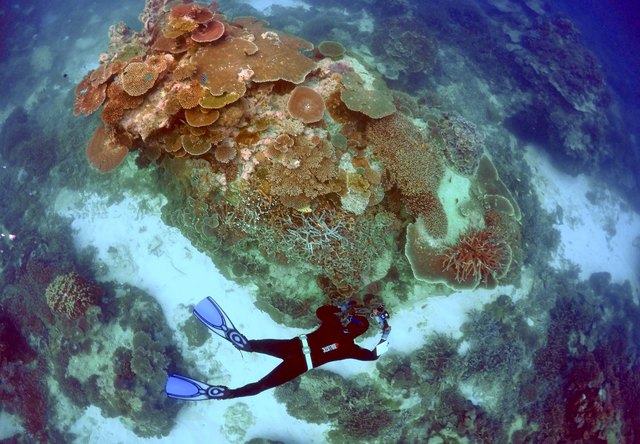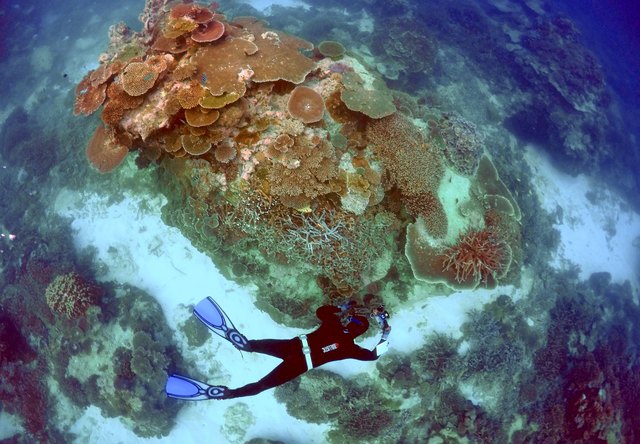93% of Great Barrier Reef hit by coral bleaching


Oliver Lanyon, Senior Ranger in the Great Barrier Reef region for the Queensland
Parks and Wildlife Service, takes photographs and notes during an inspection of
the reef’s condition. (Photo: Reuters)
A group of Australian scientists investigating the extent of coral bleaching in the Great Barrier Reef say just seven percent of the natural icon has been unaffected.
Bleaching of coral occurs where it expels living algae, causing it to calcify as a result of rising sea temperatures. Mildly bleached corals can recover if the temperature drops, otherwise the coral may die.
Professor Terry Hughes, who convened the taskforce, says scientists are continuing to measure the ongoing impact of the bleaching.
He said the current event was by far the biggest.
“We’ve never seen anything like this scale of bleaching before. In the northern Great Barrier Reef, it’s like 10 cyclones have come ashore all at once,” Professor Hughes said as quoted by the Sydney Morning Herald.
“Towards the southern end, most of the reefs have minor to moderate bleaching and should soon recover.”
The Great Barrier Reef, which attracts around $5 billion, stretches 2,300 km along Australia’s northeast coast and is the world’s largest living ecosystem.
Although the impact has been exacerbated by one of the strongest El Nino’s in nearly 20 years, scientist believe climate change is the underlying driver of bleaching.
UNESCO’s World Heritage Committee last May stopped short of placing the Great Barrier Reef on an “in danger” list, but the ruling raised long-term concerns about its future.
Australia is one of the largest carbon emitters on a per capita basis thanks to its reliance on coal-fired power plants.
US President Barack Obama embarrassed host Australia 18 months ago at Brisbane’s G20 Summit by warning of the risk of climate change to the reef.
Despite pledging to cut carbon emissions, Australia has continued to support fossil fuel projects, including Adani Enterprises Ltd’s proposed $10 billion Carmichael coal project in the Galilee Basin in western Queensland.
– with other agencies


